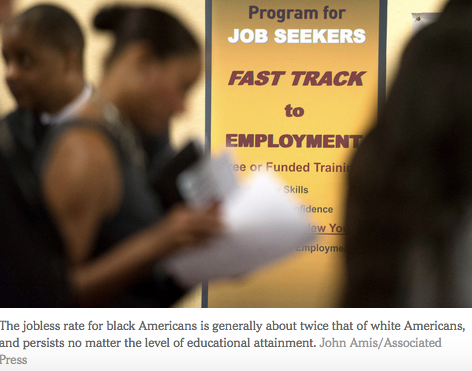The recent finding by The New York Times that black students are still vastly underrepresented at the nation’s top colleges and universities is one sign of how little the country has managed to do to close racial gaps.
Unemployment rates among black workers give a similarly gloomy picture. The jobless rate for black Americans is generally about twice that of white Americans, a ratio that improves only somewhat in “good” times, like the present, and persists no matter the level of educational attainment. The overall unemployment rate for black workers is now 7.4 percent and for white workers is 3.8 percent. For college-educated workers, the recent average jobless rate was 4.2 percent for blacks, compared with 2.5 percent for whites.
The hard truth is that the persistence of twice-as-high joblessness for black workers has led policy makers to accept it is as normal. Just look at the Federal Reserve. Monetary policy is supposed to foster stable prices and full employment. But the Fed has historically favored inflation fighting over boosting employment, a policy bias that generally leads it to raise interest rates before the job market is as strong as possible, as measured by low unemployment and rising pay for all groups of workers. The Fed has already raised rates twice this year and many Fed officials appear to favor a third increase by year’s end, with evident disregard for the fact that black unemployment is now at levels that prevailed for white workers in 2012, when the economy was still very much in the shadow of the Great Recession.




